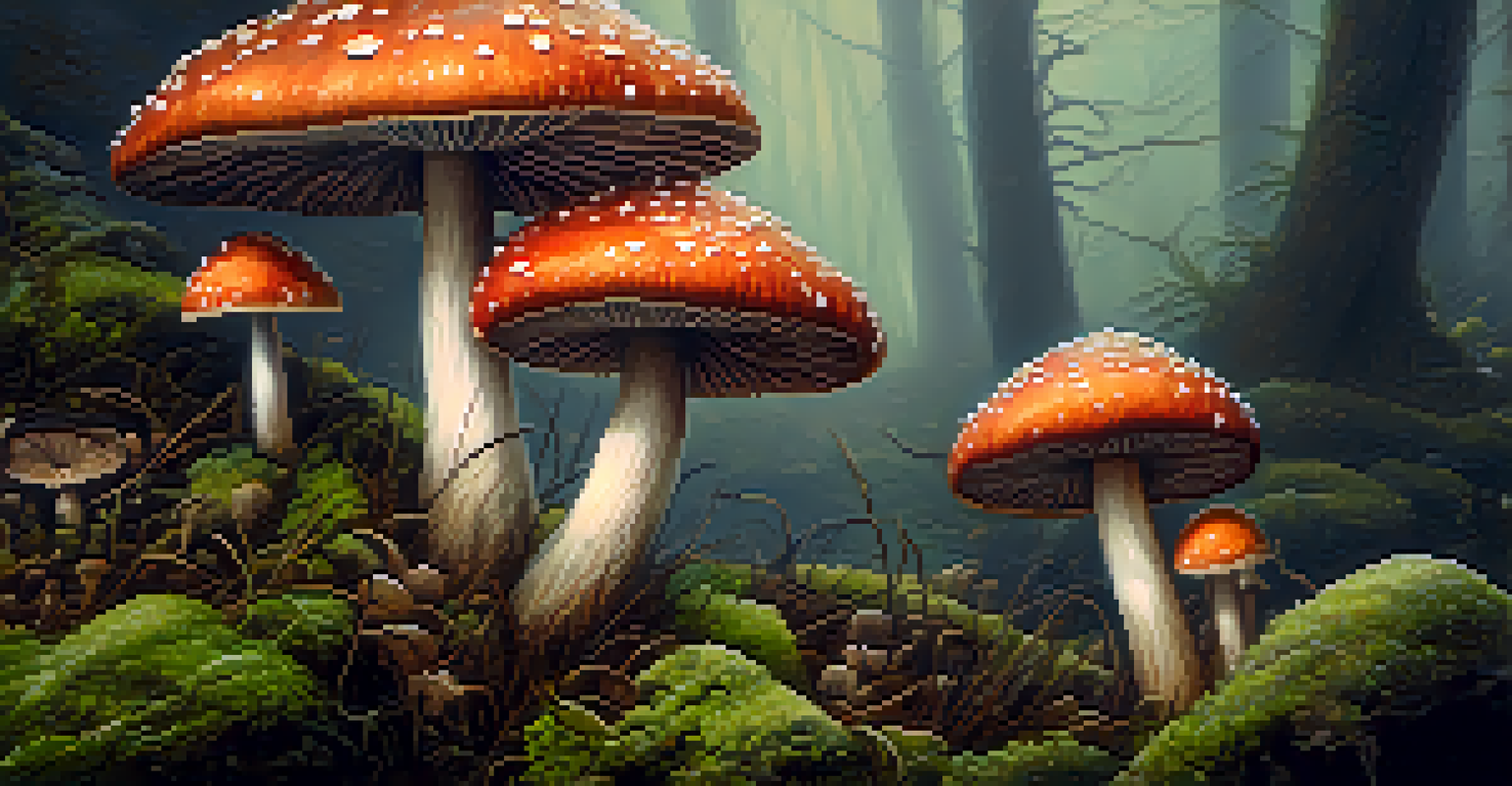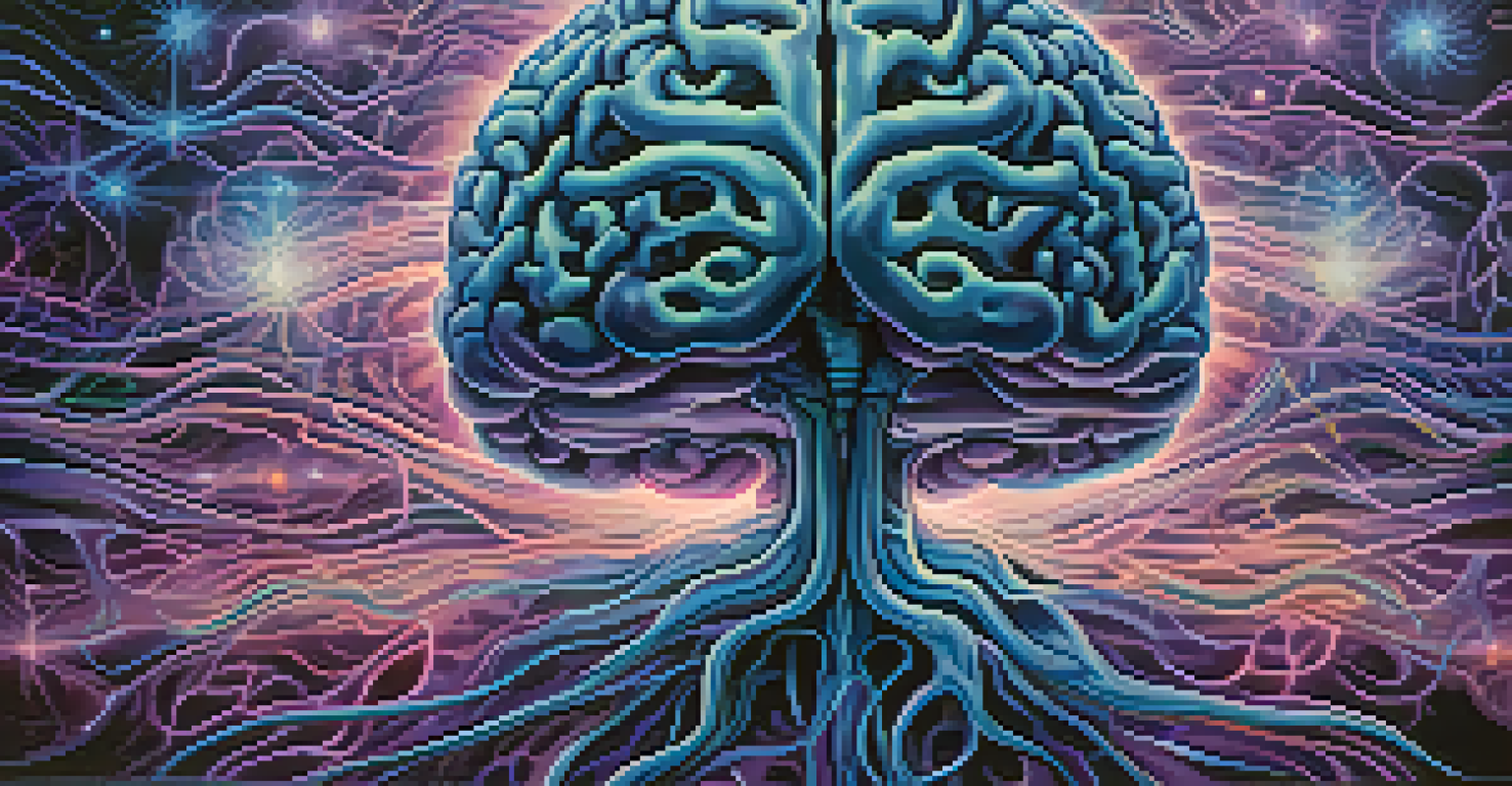Cultural Perspectives on Entheogens in Healing Practices

Understanding Entheogens: Definitions and Context
Entheogens are substances, often derived from plants, that are used in a spiritual or religious context to induce altered states of consciousness. These substances have been utilized for centuries, often viewed as sacred tools for healing and personal growth. In various cultures, they serve as bridges to the divine or pathways for introspection, helping individuals connect with deeper aspects of themselves.
The plant is the teacher and the human is the student.
The word 'entheogen' itself comes from Greek roots meaning 'generating the divine within.' This highlights the transformative potential these substances hold, not just for individual healing but also for communal experiences. Understanding this foundational definition is crucial before delving into the myriad ways different cultures incorporate these substances into their healing practices.
In modern discussions, entheogens often evoke images of psychedelic experiences. However, it's essential to recognize that their historical and cultural significance extends far beyond recreational use. By appreciating this context, we can better understand their role in various healing traditions.
Indigenous Practices: A Deep-rooted Connection
Many Indigenous cultures around the world have long embraced entheogens as integral to their healing practices. For instance, the use of peyote in Native American rituals emphasizes spiritual connection and communal healing, often leading to profound personal insights. These practices are not merely about the substances themselves but involve intricate ceremonies that foster a sense of belonging and purpose among participants.

These Indigenous healing rituals are often steeped in tradition, passed down through generations, and are seen as essential to cultural identity. The use of entheogens in these contexts serves as a means to connect with ancestors and nature, reinforcing the belief that healing is a holistic process. This perspective contrasts sharply with the more clinical approaches often seen in Western medicine.
Entheogens and Spiritual Healing
Entheogens are sacred substances used across cultures for spiritual healing and personal growth.
Moreover, these practices highlight the importance of intention and setting in the healing process. Participants often prepare mentally and spiritually before engaging with entheogens, ensuring a respectful and purposeful approach to their experiences.
Ancient Civilizations: A Historical Lens
Throughout history, various ancient civilizations have recognized the healing properties of entheogens. The use of substances like the soma in Vedic traditions or the sacred mushrooms in Mesoamerica illustrates a rich tapestry of belief systems that revered these plants. In these cultures, entheogens were often viewed as gifts from the gods, meant to provide guidance and insight.
We are not just human beings having a spiritual experience; we are spiritual beings having a human experience.
The role of entheogens in ancient healing practices was often accompanied by rituals and ceremonies that facilitated a deeper connection with the spiritual realm. This historical context sheds light on why many contemporary practices still draw upon these ancient wisdoms. They serve as reminders of a time when the boundaries between the physical and spiritual worlds were seen as fluid.
By examining these ancient practices, we can appreciate how they laid the groundwork for modern therapeutic approaches that incorporate entheogens. Understanding the historical significance of these substances allows us to approach contemporary healing practices with respect and awareness of their roots.
Modern Therapeutic Uses: A New Frontier
In recent years, there has been a resurgence of interest in entheogens within the field of modern psychotherapy. Many researchers are exploring their potential to treat conditions like PTSD, depression, and anxiety. The growing body of evidence supporting their therapeutic use suggests that these substances can facilitate profound psychological healing when used responsibly in controlled settings.
Organizations and clinicians are now conducting clinical trials to better understand how entheogens affect the brain and contribute to healing. This modern approach often mirrors traditional practices, emphasizing the importance of guidance, intention, and integration post-experience. The blending of ancient wisdom with contemporary science presents an exciting opportunity for holistic healing.
Indigenous Practices Matter
Respecting Indigenous traditions is crucial when engaging with entheogens, as they are deeply rooted in cultural identity.
However, this resurgence is not without its challenges. There are ongoing discussions about ethical practices, cultural appropriation, and the importance of respecting Indigenous knowledge. Striking a balance between modern therapeutic uses and traditional practices is crucial for sustainable and respectful integration of entheogens into healing modalities.
Cultural Sensitivity: Respecting Traditions
As interest in entheogens grows, so does the conversation around cultural sensitivity and respect for Indigenous practices. It is essential to recognize that these substances are not just tools for personal exploration but are deeply embedded in the spiritual and cultural fabric of many communities. Engaging with these practices requires an understanding of their origins and significance.
Cultural appropriation is a critical issue that arises when individuals or groups adopt elements from another culture without understanding or respecting their context. This can lead to the commodification of sacred practices, stripping them of their meaning and value. Therefore, it’s vital for those interested in entheogens to approach these traditions with humility and a willingness to learn.
Building relationships with Indigenous communities and supporting their rights and practices can foster a more respectful exchange. By prioritizing cultural sensitivity, we can ensure that the benefits of entheogens are shared in a way that honors their historical significance and supports the communities that have cultivated them for generations.
The Science Behind Entheogens: Bridging Two Worlds
The intersection of science and spirituality is a fascinating aspect of entheogens. Recent studies have begun to uncover the ways these substances interact with the brain, potentially leading to therapeutic outcomes. Understanding the neurochemistry behind entheogens can demystify their effects and validate the experiences reported by users.
For example, research on psilocybin—the active compound in magic mushrooms—has shown promise in promoting neuroplasticity, which is the brain's ability to reorganize itself. This could explain why individuals report transformative experiences and lasting changes in perspective after guided sessions. Such findings help bridge the gap between ancient practices and modern therapeutic frameworks.
Science Supports Therapeutic Use
Emerging research highlights the potential of entheogens in modern psychotherapy, particularly for mental health conditions.
However, while scientific support is growing, it is essential to maintain a holistic view that includes the psychological and spiritual dimensions of healing. This multidimensional approach can lead to more comprehensive care that respects both the scientific and experiential aspects of entheogens.
Future Directions: Integrating Entheogens in Healing
Looking ahead, the future of entheogens in healing practices appears promising. As more research emerges and societal perceptions shift, there is potential for these substances to be integrated into mainstream therapeutic approaches. This integration could offer new pathways for healing and personal growth, benefiting a wider population.
However, this future must be approached with caution and respect. Ensuring that Indigenous voices are included in the conversation is crucial for ethical integration. It’s also essential to establish regulations and guidelines that prioritize safety and informed consent for those seeking therapeutic experiences.

Ultimately, the journey of entheogens in healing practices is a collective one. By learning from various cultural perspectives and scientific advancements, we can create a more inclusive and respectful framework that honors both traditional wisdom and modern therapeutic needs.